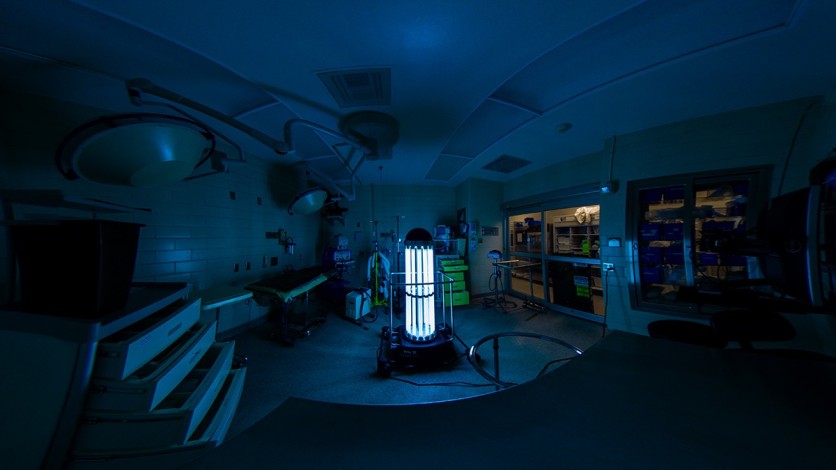The Texas A&M Veterinary Medical Teaching Hospital (VMTH) has introduced an innovative tool named "Trudy." Unlike conventional robotic cleaners, Trudy is a stationary disinfection robot equipped with 28 bulbs and eight ultraviolet-C (UVC) centers, designed to eradicate even the most resilient infection-causing bacteria that may persist on various surfaces.
Trudy, developed by Texas A&M, employs cutting-edge UVC technology to ensure comprehensive sanitation. Upon placement in a room, Trudy's 360-degree sensors meticulously assess the room's dimensions, tailoring the disinfection cycle, which typically ranges from 15 to 40 minutes based on the room's size.

Trudy: The Sanitizing Robot
Since its integration earlier this year, Trudy has become an indispensable asset across VMTH, serving in critical areas, including operating rooms, exam rooms, isolation spaces, and ICUs in both large and small animal teaching hospitals.
While complementing manual cleaning methods, Trudy enhances the overall efficiency, affording staff additional time for crucial patient care.
Pam Douglas, infection control coordinator at the VMTH, emphasized the critical role of sanitation in a hospital setting, particularly for patients who may be vulnerable to infections that can spread to animals and humans.
Traditional manual sanitation methods involve labor-intensive processes, often requiring the removal and thorough cleaning of all equipment in a room.
"There are many people here who are trained to run Trudy besides the infection prevention department. All of the controls are on an iPad," Douglas said in a press statement.
"Even though we clean, Trudy is an enhancement to our patients, staff, faculty, and even the community. It ensures that we protect everyone as much as possible from the environmental spread of germs," she added.
Read Also : Scientists Develop 'Electric Tongue' That Mimics Human Taste Buds, Introducing Emotional Intelligence to AI
Trudy Robot Is Accessible Via iPad
Katy Wendler, assistant hospital administrator overseeing the VMTH's operating rooms, explained that manual cleaning, while effective, demands significant time and effort, involving multiple technicians and meticulous attention to detail.
Trudy's implementation has streamlined the sanitation process, allowing staff to focus on patient care. Its ability to conduct random cleanings of rooms, even those not recently used, adds an extra layer of precaution in preventing the spread of infections.
While Trudy is stationary, its impact on hospital sanitation has been transformative. Its tall, cylindrical frame houses UVC lights, creating an appearance reminiscent of robots from science fiction.
Despite its advanced technology, operating Trudy is straightforward, with all controls accessible via an iPad. Trudy's contribution extends beyond the hospital's walls. Its deployment may mark a significant step towards establishing a new standard of infection control within veterinary healthcare.
"With Trudy around, our people can do other things, like spend more time with patients. We still use manual cleaning, but now we can also use Trudy to do random cleanings of rooms, even when they haven't been used recently," Wendler noted.
Related Article : Self-Destructing Soft Robots by Korean Researchers Can Effectively Disappear After Completing Military, Intelligence Tasks

ⓒ 2026 TECHTIMES.com All rights reserved. Do not reproduce without permission.




